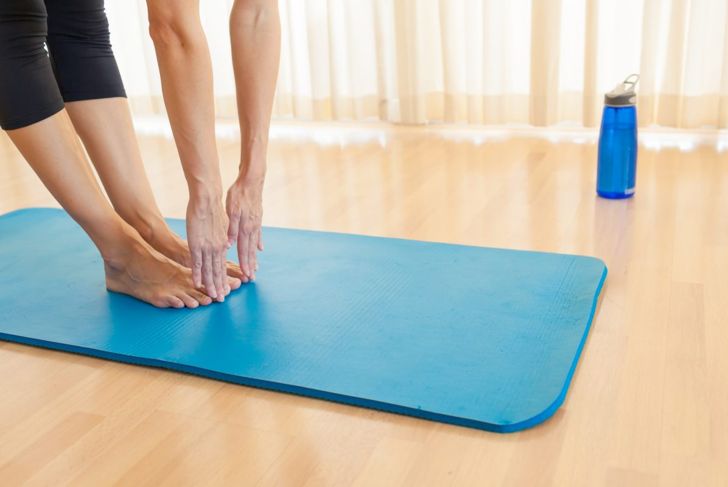The Epley maneuver is a simple sequence of positions that help manage dizziness associated with benign paroxysmal positional vertigo or BPPV. Dr. John Epley created the procedure in 1979, and published his first report on its effectiveness in 1992. Though the Epley maneuver has since received a few adjustments, it remains the primary treatment for this type of vertigo.
Background Information
The goal of the Epley maneuver is to restore equilibrium to the semicircular canals, treating the symptoms of BPPV. Within the inner ear are collections of calcium crystals called canaliths. BPPV occurs when these canaliths become dislodged and float freely in the inner ear and into the semicircular canals. As the head moves, they stimulate a structure in the inner ear called the cupula, causing the brain to think the head is moving in ways that it is not.
How It Works
By guiding a patient through a specific sequence of positions, a therapist can relieve their symptoms. The first few positions help dislodge any calcium crystals that have embedded themselves in the cupula. As the patient moves through the remaining positions, these crystals travel backward and no longer affect the cupula.
Sequence of Positions
Based on a 2003 research study featured in the Canadian Medical Journal Association Journal, the Epley maneuver uses the following sequence of positions:
The patient sits upright and fully extends their legs. Rotate the head 45 degrees towards the side that has the loose calcium crystal.
While maintaining the rotation of their head, quickly lower the patient so they are lying horizontally with their torso facing up. Hold the neck 30 degrees below horizontal while keeping the head rotated to the side.
While the patient holds this position for one to two minutes, observe their eyes for involuntary movements that signify nystagmus.
Rotate the patient’s head 90 degrees in the opposite direction while maintaining the 30 degrees of neck extension. Hold this position for one to two minutes.
Roll the patient onto their shoulder and rotate their head 90 degrees, so they face downward at a 45-degree angle.
Slowly bring the patient into an upright sitting posture while maintaining the rotation of their head.
Home vs. Clinic
While most healthcare professionals recommend having a technician or a therapist perform the Epley maneuver in a clinic, there is a more simple option for home use. Before using the home method, speak with a healthcare provider to learn what side has the calcium crystal.
Begin by sitting on a bed with legs extended. Turn your 45 degrees to the affected side.
Quickly lie down, maintaining the head’s rotation and keeping the neck extended. Wait 30 seconds
Rotate the head 90 degrees so it faces the opposite side at a 45-degree angle. Hold this position for 30 seconds.
Roll onto the shoulder of the side the head is facing while maintaining head rotation. Wait another 30 seconds.
Sit up.
How Well it Works
While the effectiveness of procedures like the Epley maneuver is somewhat controversial, numerous studies show it can help reduce vertigo symptoms. In many studies, people find their vertigo completely resolves more often when they use the Epley maneuver. Additionally, some researchers found that if using the Epley maneuver once was not effective, using it a second time would often achieve results. One study reported that one-third of cases of BPPV recur even after using the Epley method.
Possible Risks
Because each motion places very little stress on the body, the Epley maneuver is an extremely safe treatment for BPPV. However, it can lead to a few complications. People with cervical spine issues may not be able to tolerate the positions and experience severe pain. Some individuals vomit during the procedure, while others experience general nausea and residual vertigo.
After the Procedure
Most people experience immediate improvement after using the Epley maneuver. People who perform the home version should contact their doctor or physical therapist if symptoms persist. Some clinics provide patients with a soft collar to protect the head from any positions that may displace the calcium crystals. It is uncertain if activity restrictions are necessary to improve the Epley maneuver’s effectiveness, though some studies suggest this is the case.
Continued Dizziness
If dizziness persists after the Epley maneuver is complete, several possible issues could be responsible. Some people require multiple sessions to see any improvement. The Epley maneuver also only treats vertigo resulting from BPPV. If another underlying condition is causing vertigo, the patient will notice no change after the procedure. Other conditions that can cause vertigo or vertigo-like symptoms include migraines, ear infections, and anemia.
Updates to the Maneuver
Over the years, a modified version of the Epley maneuver has become the most common option. Originally, Epley would mechanically vibrate the mastoid bone, believing that this helped loosen debris. His research stated this was significantly more effective than the position changes alone. However, modern studies overwhelmingly disagree with his results. Because of this, very few clinics perform mastoid vibration.
Previous Treatment Options
Doctors initially told patients with BPPV to avoid positions that triggered vertigo. Some experts recommended habituation exercises like bending over or walking across a room. However, while these exercises gave some patients short-term relief, they proved ineffective over longer periods. Additionally, they were too difficult for many patients. In 1988, the Semont maneuver became a prevalent treatment of BPPV but was ultimately more difficult for patients than the Epley maneuver. This led to the Epley maneuver becoming the dominant treatment method.

 Home
Home Health
Health Diet & Nutrition
Diet & Nutrition Living Well
Living Well More
More




















